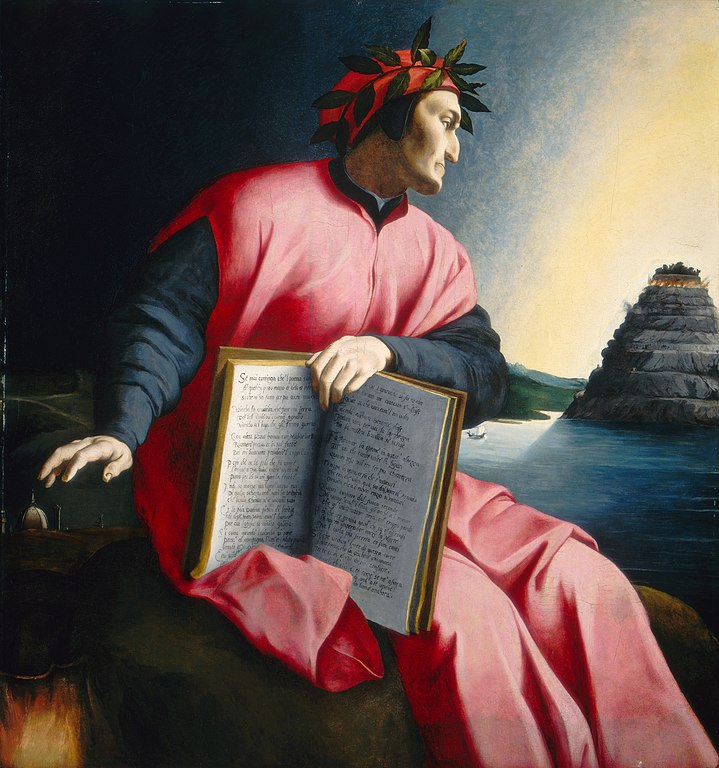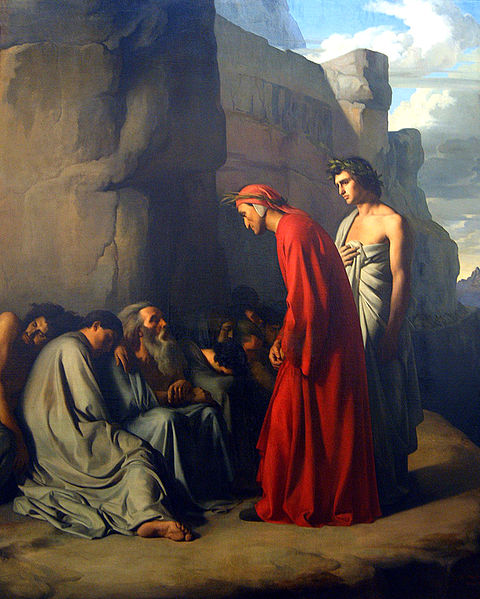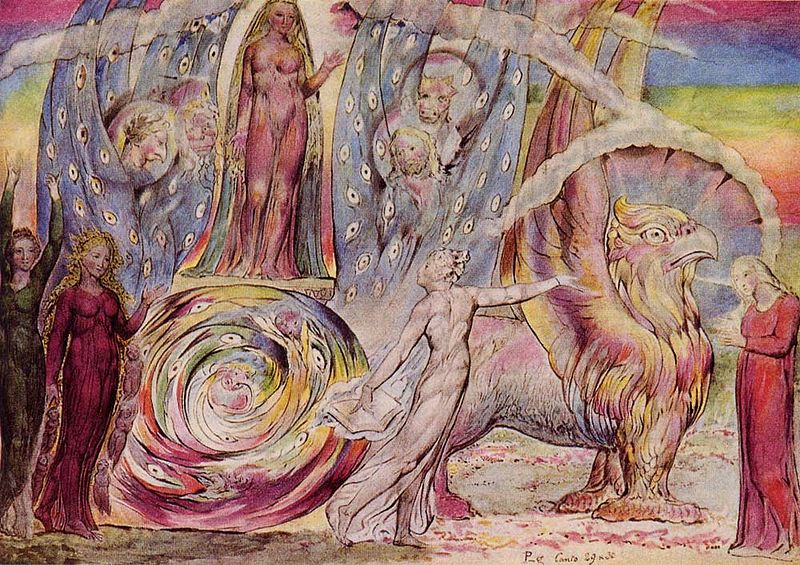
Week 33: Dante Alighieri, 1265-1321
Purgatorio
By class time this week, please have read:
- Dante, Purgatorio
Here we come to the middle segment of Dante’s Divine Comedy. As I mentioned before, it is my favorite book of the three. Nailing down exactly why would be more difficult, but the change in tone and direction is at least something we can discuss.

Among other things, the poet’s task has subtly shifted between the Inferno and the Purgatorio. The character in the first book were all effectively static in their situation, at least — whether that was actually echoed in the unfolding of their depiction is something you can decide for yourselves, based on our class discussion and what Auerbach said. Here he is able — indeed, required — to show souls in a changeable condition, as they were not in the Inferno. All the souls one meets in Purgatory are ultimately destined, after a time of purification (purgation — whence the name) for salvation and Heaven. Purgatory will eventually be emptied by the working out of their salvation. The same is not true of the Hell; similarly (though more happily) the souls in Heaven are shown as somewhat static as well. They have arrived at their eternal destination. We’ll talk about that next week. But here the very changeability of situation creates an opportunity and a demand for the poet that is substantially different from what we see in either of the other realms.
It is also worth noting that in Purgatory, too, Dante (or at least the persona of the Pilgrim narrator) becomes for the first time engaged. This is probably not his last trip through Purgatory, but he is to some degree involved in their purgation, as was not in Hell, where he was purely a spectator (even if he did occasionally converse with some of its inhabitants. In Heaven he will once again effectively become a pure spectator. It's worth asking yourself — how is this different?
Any work of art is susceptible to certain stresses and strains, and a poem of the colossal cosmic scope of The Divine Comedy is subect to more than most. How does Dante confront his task? What parts of this are the most successful? What are failures (if there are any), and (if so) why are they failures. Surely a great work like this one can suffer some lapses and still be profoundly worth reading.
There are parts of the poem that are still obscure to modern readers — and perhaps we even obscure to Dante’s own contemporaries. The letter “P” that appears on the forehead of the sinner and is eventually wiped away is a case in point. It's conventionally understood to represent peccatum or peccato — Latin and Italian for “sin”, respectively. This is how Mark Musa explains it. I think it could also plausibly stand for paenitentia or penitenza, as well — Latin and Italian for “penitence” or “penance”, though I have never seen this documented anywhere else. David Higgins, in the preface to the Oxford edition, argues that the seven repetitions of the letter stand for plagae or piaghe, Latin and Italian for “wounds”, denoting the lingering blemish — a scar, effectively — that remains after the sins have been forgiven. In a spiritual context, he explains this blemish as the predisposition of the soul still to choose evil over good; eliminating it represents the deeper reorientation of the soul toward the good and away from evil. Can any of these interpretations be completely proven? Not that I know of.
Consider the following questions for class discussion:
- What are Dante’s special challenges in this part of the Divine Comedy? How do they differ from those he encounters in the other parts? If, as Auerbach insists, “Character is destiny,” what does it mean to have a moving target like this?
- What parts strike you as most successful? Least successful?
- What do you make of the fact that Dante’s afterlife is populated predominantly by Florentines? Does this rob the poem of its broader appeal, or is that merely a practical necessity for someone in his position?
- How do you view the figure of Beatrice as compared to the objects of the hero’s love in the romances of Chrétien (such as the Yvain or any of the stories of Marie de France (if you’ve read any)? How does she function in the poem? Obviously the fact that she’s already dead places her definitely out of the range of people with whom Dante can have an earthly relationship at this point.
- What’s your take on the "P"s? Do any of those explanations strike you as more plausible than the rest?
- What parts of this narrative do you find most challenging? Does any of them speak to you on a spiritual level?

Contents of this page © Copyright 2001, 2003, 2006, 2010 by Bruce A. McMenomy.
Permission to print or reproduce this page is hereby given to members of Scholars Online for purposes of personal study only. All other use constitutes a violation of copyright.